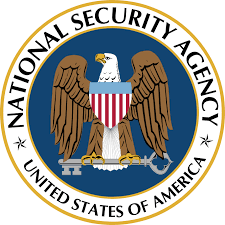New York, NY – For the first time since February, the United States is now averaging more than 100,000 new COVID cases a day with cases rising in just about every state according to the New York Times. And while the nation’s daily death rate is in the few hundreds, as opposed to the few thousand recorded at previous peaks, hospitalizations are up in over forty states, averaging more than 23,000 a day, according to the New York Times.
Even as the nation marked the somber occasion of one million COVID deaths, the response of public sector employers was very much a patchwork, with some agencies promoting telework while others appeared to dig in and demand workers return to their in-person offices even as the local COVID risk remained high.
Meanwhile, many private sector employers, already keen to hold on to their antsy employees in hard-to-fill roles, were more inclined to offer remote or hybrid flexibility to retain and attract talent.
Earlier this month, the American Federation of Government Employees Council 216, which represents most of the 2,000 people that work at the Equal Employment Opportunity Commission’s 53 field offices and its Washington D.C. headquarters, filed an unfair labor practice against the agency for unilaterally forcing their workers back to their offices this month without first allowing the union to ensure virus mitigation measures were in place.
“The union is completely opposed to reentry bargaining taking place after reentry occurs,” Council 216 President Rachel Shonfield said in a statement. “This action by the agency is already causing chaos by upending the safe and orderly processes that the union was in the midst of bargaining when the agency instead short-circuited negotiations. EEOC’s rogue conduct is contrary to the administration’s directions to bargain reentry and its commitment to collective bargaining.”
“The EEOC has been bargaining in good faith and continues to do so,” countered the EEOC in a response to a LaborPress query about the union’s filing.
“Despite making progress during months of dialogue about return to work and lengthy formal collective bargaining negotiations with the EEOC’s union, we have been unable to resolve several key issues,” the agency said. “These issues are primarily related to the EEOC’s ability to serve the public in person during intake, mediation, hearings and other mission-critical operations; the number of days employees need to report to the office per week; and the length of time before employees need to begin reentry. We remain committed to seeking an agreement with the union and look forward to continuing our ongoing discussions regarding the impact and implementation of the EEOC’s Reentry Plan on the bargaining unit employees.”
The EEOC said that the union employees would “join the approximately 650 non-bargaining unit EEOC employees who have already returned to the EEOC’s offices” and “be expected to be in the office for at least one day each week for the first month after they return, and then at least two days a week for the remainder of the calendar year unless they have received an accommodation or a temporary deferral of reentry due to a pandemic-related hardship. Throughout the reentry process, we will continue to work to protect the health and safety of the EEOC’s dedicated employees and the American public.”
In the statement, the agency credited its employees with working “diligently throughout the pandemic” but that it remained a priority for it to “reopen our doors, reestablish our physical presence in the communities we serve, and provide critical services to vulnerable employees and applicants who most need our help.”
According to the union, the agency’s failure to complete a memorandum of understanding [MOU] and ordering workers back improperly bypassed the union.
“By its actions, the agency is interfering with, restraining, and coercing the exclusive representative in its ability to represent EEOC bargaining unit. An agency is required to avoid implementing changes while the negotiation process proceeds to final resolution,” the council said in the ULP complaint, which was filed on May 6.
“The union rejects the possibility of post-implementation bargaining. The union requests the agency cease and desist the unilateral implementation of their reentry plan,” the council added. “The status quo must be maintained and bargain unit employees working conditions, including 100% telework should not change until the parties have reached agreement or bargaining obligations have been met per the statute.”
Shonfield recalled in a phone interview how back at the start of the pandemic in early 2020, the union was “breaking down the door of our headquarters to let them know that COVID was a real crisis — that it was dangerous.”
In an interview earlier this year with LaborPress, Dr. Everett Kelley, national president of AFGE confirmed the union of 700,000 had lost at least 600 members during COVID, many through their occupational exposure to the deadly virus. Union officials have confirmed they have anecdotal reports of so-called long COVID symptoms among their members of varying severity that have persisted months after the initial infection.
The AFGE president said he has tried to call the family of each union member who died in the pandemic. “It’s something I don’t wish of anyone because we know that person is not coming back and that person gave their life, right — for their job — knowing the hazard and in many cases they were not protected at all,” he told LaborPress. “It was very difficult [to get information].” We had to fight. We had to expose. We had to do all kind of things just to get information — and to be honest with you, we really don’t know the real amount. There’s so much we don’t know. It really varies by agency.”
Early on, the union’s TSA officers were some of the first to be infected and killed by COVID. AFGE members and their families serving in congregant facilities like the ones run by the Veteran’s Administration and the Bureau of Prisons were particularly hard hit, as well as those with frontline job titles like USDA inspector in the nation’s meat processing plants were also put at significant risk. Throughout the pandemic, particularly during the Trump administration, federal agencies refused to provide the union with any information about the status of the pandemic within their operations as the death toll mounted.
Initially, with her union members continuing to staff EEOC’s Seattle office, the virus’s first epicenter, Shonfield said she had a hard time getting management to come to grips with the emergency. “In Seattle we had Amazon and Google — all the corporations — sending their people home to work remotely — in Seattle even the courts were closed,” said Shonfield. “Finally, in March of 2020 everybody [agency-wide] got released to work remotely.”
The Council 216 president said that the virtual mediation sessions her members launched during the pandemic were “widely popular” with the public who were spared the fuel, parking and travel time expense of coming to one of the agency’s physical locations.
With the election of President Biden, the incoming president reversed several Trump-era executive orders that sought to eliminate the presence of unions in the federal workplace. In addition, the Office of Personnel Management, the federal government’s lead human resource agency, urged federal agencies to incorporate telework where practical as a way to attract and retain workers in an increasingly competitive job market.
“The effects of the COVID-19 global pandemic have prompted a significant interest, nationwide, in using telework and remote work as an important tool for safely and efficiently delivering mission-critical services in the public and private sectors during emergencies,” wrote OPM Director Kiran Ahuja. “Agencies demonstrated that they have been able to continue to carry out their missions effectively. As a result, agencies now have an opportunity to revisit how they were operating prior to the pandemic and leverage lessons learned to integrate telework and remote work into their strategic workforce plans.”
With the selection by President Biden of well-regarded civil rights attorney Charlotte A. Burrows as chair of the EEOC, the union was optimistic. “The new chair’s first town hall after becoming chair she mentioned she looked forward to working with the union on the COVID issue,” Shonfield said. “As other federal agencies are planning the ‘future of work’ she is tied to the past. She wants people in the office.”
She continued, “Now, our investigators and other employees see in these announcements from other agencies they are offering the option to work remotely or to come in one day a week when you don’t have public-facing duties and they see our agency dragging its feet. They are just going to leave.”





